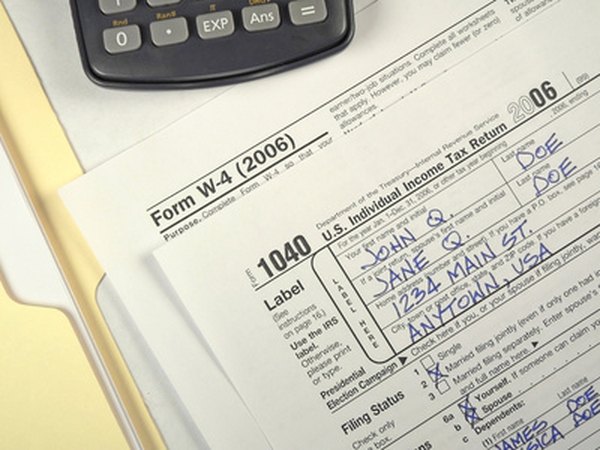Differences Between a Traditional IRA & a SIMPLE IRA
Both traditional and SIMPLE IRAs offer tax deductions for contributions.
tax forms image by Chad McDermott from Fotolia.com
Traditional individual retirement accounts and savings incentive match plans for employees' IRAs both offer tax-deferred retirement savings. They also both share the same requirements for investment options and early withdrawal penalty exceptions. However, besides the fact that SIMPLE IRAs (Savings Incentive Match Plan for Employees) are set up by employers for their employees while traditional IRAs are opened on your own behalf, the Internal Revenue Service rules contain several other important differences.
Eligibility to Contribute
To contribute to a traditional IRA, you just need to have earned income during the year and be less than 70 1/2 years old at the end of the year. "Earned" income includes compensation such as wages, salary and tips (vs. "unearned" income such as interest and dividends, for example).
To contribute to a SIMPLE IRA, you must meet the eligibility requirements set by your employer. These requirements cannot exceed requiring that you earn at least $5,000 in compensation in any two prior years and are expected to earn at least $5,000 for the current year.
For example, your employer could allow you to participate if you were only expected to make $2,000, but couldn’t exclude you if you weren’t expected to make $10,000. If you’re self-employed, you can set up a SIMPLE IRA for yourself. The IRS notes that SIMPLE IRAs are ideal for small employers to offer their employees if they do not offer any other workplace retirement savings plan.
Annual Contribution Limits
Traditional IRAs have lower contribution limits than SIMPLE IRAs. As of tax year 2019, you can contribute up to $6,000 per year ($7,000 if age 50 or older) to a traditional IRA as long as you had at least that much earned income. The maximum contribution for a SIMPLE IRA is $13,000 ($16,000 if age 50 or older) or the amount of your annual salary.
Employers Matching Contributions
Employers cannot match the contributions that you make to your traditional IRA, because this is not a workplace retirement plan. With a SIMPLE IRA, your employer must make a contribution, using either the elective method or the non-elective method. Under the elective method, your employer must match your contribution dollar for dollar up to 3 percent of your salary. Under the non-elective method, the employer must make a contribution equal to 2 percent of your salary regardless of how much you contribute.
Early Distribution Penalties
If you take a distribution from your traditional IRA before turning 59 1/2, you pay a 10 percent tax penalty in addition to regular income tax on the entire amount of your withdrawal. The same penalty usually applies to distributions from a SIMPLE IRA. However, if you take an early distribution within two years of opening your SIMPLE IRA, you must pay a 25 percent penalty instead of a 10 percent penalty.
For example, if you take a $4,000 early distribution within two years of opening your SIMPLE IRA, not only do you have to pay income taxes, you also have to pay a $1,000 early withdrawal penalty.
References
Writer Bio
Based in the Kansas City area, Mike specializes in personal finance and business topics. He has been writing since 2009 and has been published by "Quicken," "TurboTax," and "The Motley Fool."

